East Berlin was the capital and center of power of the GDR, but also a place of Subversion. Everyday life in the 1970s and 1980s, starts the exhibition “East-Berlin. Half of the capital” in the Ephraim-Palais.
-
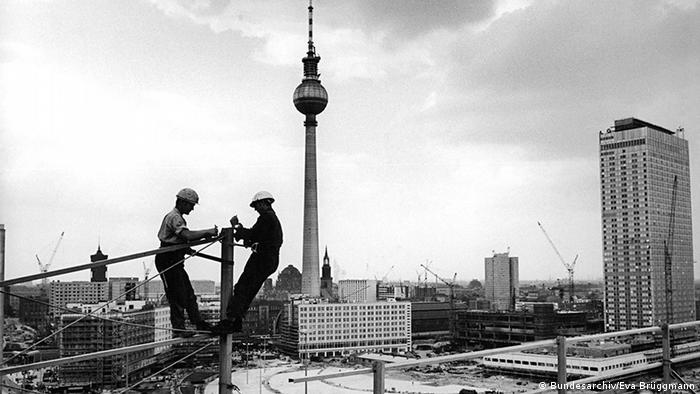
Exhibition: East-Berlin. Half of the capital
The house of the statistics
Construction workers assemble in August 1969, the lights on the house of the statistics that emerged from 1968 to the restructuring of the Alexanderplatz, according to socialist Ideals. It housed the Central administration for statistics, and departments of the Stasi after the reunification, the German Federal Statistical office and the authority of the Federal Commissioner for the Stasi records. A basic renovation is planned.
-
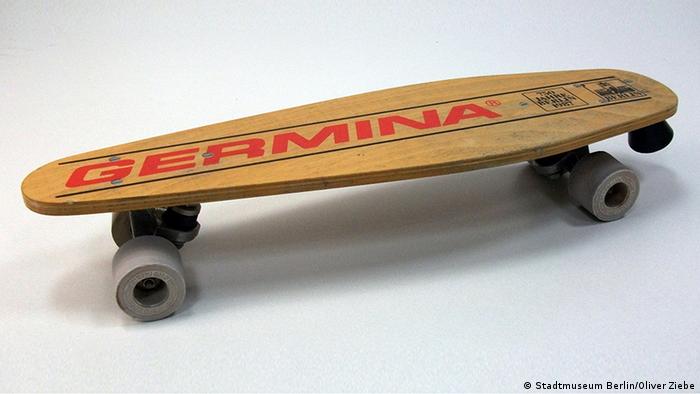
Exhibition: East-Berlin. Half of the capital
Chocolate Board
The Germina Speeder, 1987, was the only one in the GDR-produced Skateboard. Because of the manufacturer’s of the people’s own enterprise (VEB) chocolate-processing machines Wernigerode from the combine food and beverage engineering, it was mocked as “chocolate Board”. With his painted Deck and the narrow rollers and axles it was for skating unsuitable.
-
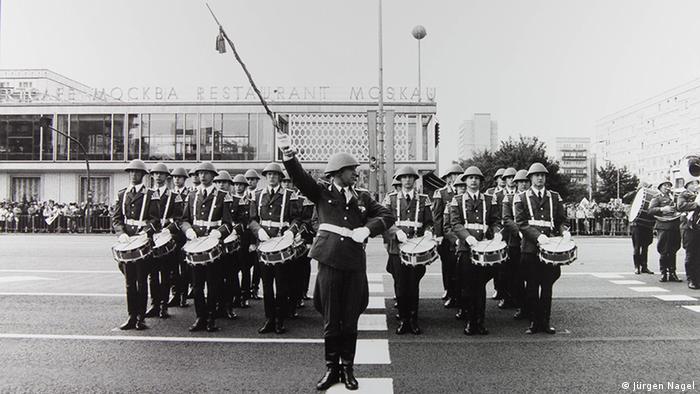
Exhibition: East-Berlin. Half of the capital
Proletarian Military
The combat groups of the working class, were a paramilitary organization of employees in state-owned enterprises, Agricultural production cooperatives, universities and other state institutions. Several times a year they came together in their spare time to military exercises, and swore to defend the socialist achievements of the SED with the weapon.
-
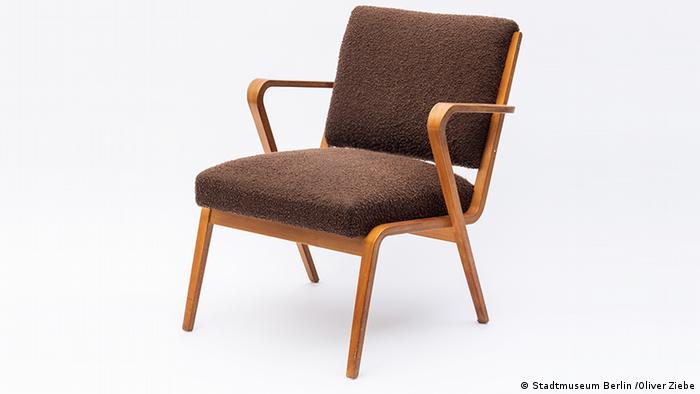
Exhibition: East-Berlin. Half of the capital
Classic in the Bauhaus Tradition
Some of the GDR furniture are now design classics, especially when they are influenced by the simple Bauhaus elegance. The former Bauhaus Student Selman Selmanagic created for the VEB Deutsche Werkstätten Hellerau these armchair of 1957. The German architect of Bosnian origin, Professor at the art Academy Berlin-Weißensee was before he joined the VEB Dresden.
-
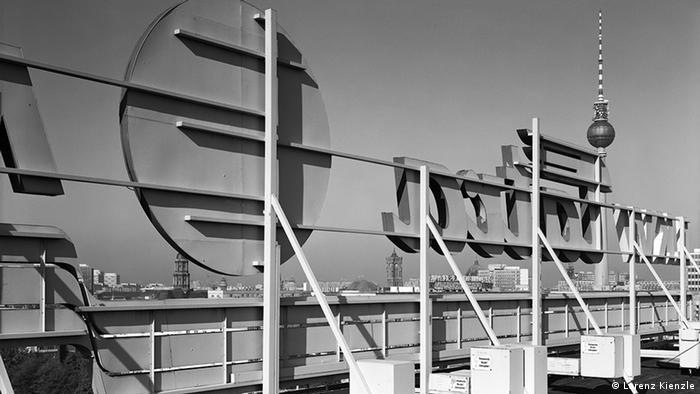
Exhibition: East-Berlin. Half of the capital
Between GDR-architecture and expropriation
Of the Karl-Marx-Allee, the Berlin Cathedral, the Red town hall and television tower can be seen. In the 1950s, built, of Socialist classicism and the Schinkel school-influenced work of the palaces should be in the time of Stalin, the art of engineering in the GDR Avenue demonstrate. Here is a step-annually in the honour parade the National people’s army along. Today, expropriation is raging debate.
Author: Torsten Landsberg
-

Exhibition: East-Berlin. Half of the capital
The house of the statistics
Construction workers assemble in August 1969, the lights on the house of the statistics that emerged from 1968 to the restructuring of the Alexanderplatz, according to socialist Ideals. It housed the Central administration for statistics, and departments of the Stasi after the reunification, the German Federal Statistical office and the authority of the Federal Commissioner for the Stasi records. A basic renovation is planned.
-

Exhibition: East-Berlin. Half of the capital
Chocolate Board
The Germina Speeder, 1987, was the only one in the GDR-produced Skateboard. Because of the manufacturer’s of the people’s own enterprise (VEB) chocolate-processing machines Wernigerode from the combine food and beverage engineering, it was mocked as “chocolate Board”. With his painted Deck and the narrow rollers and axles it was for skating unsuitable.
-

Exhibition: East-Berlin. Half of the capital
Proletarian Military
The combat groups of the working class, were a paramilitary organization of employees in state-owned enterprises, Agricultural production cooperatives, universities and other state institutions. Several times a year they came together in their spare time to military exercises, and swore to defend the socialist achievements of the SED with the weapon.
-

Exhibition: East-Berlin. Half of the capital
Classic in the Bauhaus Tradition
Some of the GDR furniture are now design classics, especially when they are influenced by the simple Bauhaus elegance. The former Bauhaus Student Selman Selmanagic created for the VEB Deutsche Werkstätten Hellerau these armchair of 1957. The German architect of Bosnian origin, Professor at the art Academy Berlin-Weißensee was before he joined the VEB Dresden.
-

Exhibition: East-Berlin. Half of the capital
Between GDR-architecture and expropriation
Of the Karl-Marx-Allee, the Berlin Cathedral, the Red town hall and television tower can be seen. In the 1950s, built, of Socialist classicism and the Schinkel school-influenced work of the palaces should be in the time of Stalin, the art of engineering in the GDR Avenue demonstrate. Here is a step-annually in the honour parade the National people’s army along. Today, expropriation is raging debate.
Author: Torsten Landsberg
The exhibition in Berlin shows a photo on the to see an old lady. She holds a yellowed S-Bahn ticket in Hand. In addition, a plaque with their story, which tells of a visit in West Berlin- on 12. August 1961. Late in the evening, she was with this Ticket to his home in the East, not realizing that it should have been for decades, her last visit to the Relatives in the West. The next day, the GDR started with the building of the wall.
Touching the fates are just a Nuance of the exhibition “East-Berlin. Half of the capital”, the on 11. May 2019 opened in Berlin’s Ephraim-Palais. In your heart, almost 30 years after the fall of the wall is how people in the capital of the GDR lived, so lived, worked, and celebrated have consumed.
The construction of the wall as a side note
“The city had many faces,” says Jürgen Danyel, curator of the exhibition and Deputy Director of the centre for historical research, Potsdam, which is why there is also to discover a lot of prospects. “East Berlin was the political Deputy of the GDR, but also the Eldorado of the subculture. Between these poles there is to find a company.”
The construction of the wall is a side note of the Show, because there is from the point of view of the Parties are already enough points of contact for these issues. The posters, photos, sketches, and paintings are evidence of vibrant cultural milieu, and their attempts to stretch the limits specified and in the equality of trimmed System space for individuality.
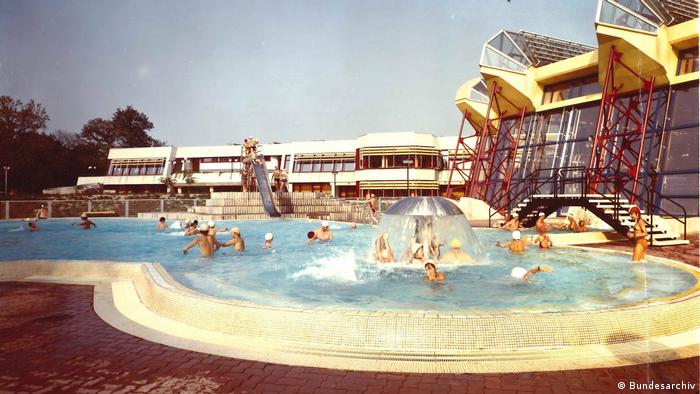
The sports and recreation center in East-Berlin
The exhibition pays tribute to the people in spite of the Stasi, and ban to a normal everyday life, led life, and look back to the 1970s and 1980s with their redesign of the East Berlin center, as a structural design of a modern socialist capital city. In Parallel, more and more subcultures that attempted to circumvent state control. Eventually was too much for the state control. Performances of system enemies like Depeche Mode in 1988, or Bruce Springsteen, flocked to the in the same year, 160,000 viewers, were only the most prominent of the political upheavals Herald.
Different systems, similar needs
In a city that is not grown for 30 years after the end of their division yet and so something such as identity, addiction, accompanied and complicated by a rapid change, accompanied by a tremendous population growth, may contribute to an exhibition such as this one to historical understanding. It also shows that the differences of the political systems were not large, the needs and the reality of life of the people in everyday life on both the East and West side of the wall, but not so very different from each other.
The levels are high in the three floors of the Museum terms, the staff of the exhibition with East-Berlin, are: “control”, “black taxi”, “snake”. Some terms may not be in Ost-Berlin limited, and also had beyond-the-wall application: “Separate families”, “Free Parking”, “meatball”, “bread Rolls”, “vacant lots”.
The East is more ambivalent than the West
The original idea for the Show based on another exhibition in the Ephraim-Palais, told Paul Spies, the Executive Board and the Director of the city Museum of Berlin: in demand Than he was in 2016, the new Director of the Foundation, the city Museum, he had, with a view to the just ended exhibition “West:Berlin,” a sequel about the Eastern part. “The complexity in dealing with East-Berlin is bigger,” says Spies. The West part, one can show nostalgic and tell stories of the East was, however, ambivalent. “Because it’s quick to Ostalgie and the longing for something that was not positive.” The once divided city has to be historically considered in the balance.
Is framed the six-month exhibition of an extensive series of events with lectures, city walks, a Revue in the people stage, film evenings in the Babylon cinema, discussion groups, an Online travel guide and Blog. “The visitors want to get fancy, look at the city,” says curator Jürgen Danyel, who also edited the accompanying book “Ost-Berlin – 30 explorations”.
The Exhibition “East-Berlin. The half of a capital” opened at 11. May and runs until 9. November, 2019, the 30. Anniversary of the opening of the wall.





